Red River Colony
The Red River Colony, a key part of Manitoba's rich history, was a settlement on the Red and Assiniboine rivers whose boundaries crossed parts of what are now Manitoba and North Dakota. Founded in 1812 by Thomas Douglas, 5th Earl of Selkirk, the colony grew through times of extreme hardship into a multiracial society. It was the site of the Red River Resistance before reluctantly joining Canada as the province of Manitoba.
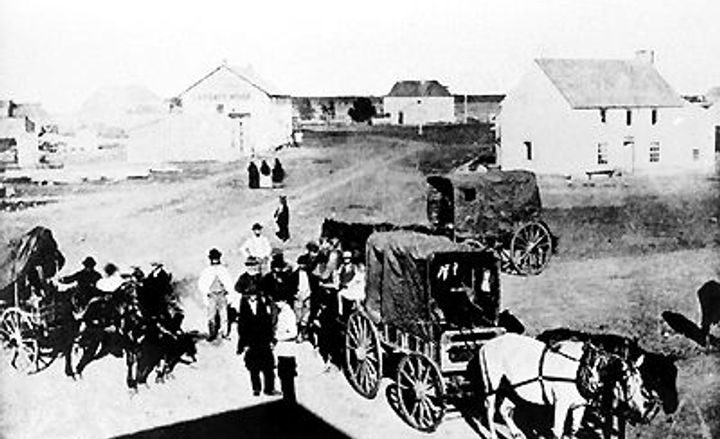
-
June 12, 1811

Red River Colony
Selkirk's Red River Grant
The HBC granted an area of about 185 000 km² to Lord Selkirk for formation of a colony at Red River. His first settlers arrived in the summer of 1812. Despite tribulations the settlement grew into the first European colony in the North-West.
-
August 29, 1812

Red River Colony
Macdonell Reaches Red River
Governor Miles Macdonell arrived at Red River with Scottish colonists to establish Selkirk's colony. A second group arrived in October.
-
January 08, 1814
Red River Colony
Pemmican Proclamation
Governor Miles MacDonell of Red River tried to monopolize the provision trade in the Northwest with the Pemmican Proclamation.
-
June 19, 1816

Red River Colony
Battle of Seven Oaks
About 60 Métis and First Nations men, led by North West Company clerk Cuthbert Grant, were confronted at Seven Oaks by Hudon's Bay Company Governor Robert Semple and 28 men (mostly HBC officers and employees). The gunfire and hand-to-hand combat that resulted left Semple and 20 of the HBC party dead. On the Métis side, 16-year-old Joseph Letendre died, and Joseph Trottier was wounded. The battle was a culmination of the Pemmican Wars and the escalating fur trade disputes between the HBC and NWC.
-
August 13, 1816
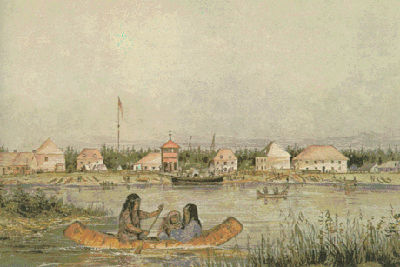
Red River Colony
Selkirk Seizes Fort William
Lord Selkirk seized the North West Company's western depot at Fort William.
-
April 08, 1820

Red River Colony
Death of Selkirk
Lord Selkirk and his family received a land grant from the Hudson’s Bay Company in 1811 for roughly 300,400 km2 in Assiniboia, part of what is now Manitoba. An advance party, sent under Miles Macdonell, established the Red River Colony in 1812. After his death, Lord Selkirk's executors took over administration of the Red River Colony.
-
March 21, 1821

Red River Colony
Fur Empires Merge
Agreement was reached to merge the North West Company and the Hudson's Bay Company as of June 1, effectively ending the fur trade out of Montréal and creating a near monopoly of the fur trade in British North America.
-
May 22, 1826
Red River Colony
Red River Flood, 1826
The greatest known flood of the Red River in Manitoba destroyed the Red River Colony. The water crested on May 22, two and a half weeks after the flood began.
-
May 04, 1836

Red River Colony
Assiniboia Transferred
The territory of Assiniboia was transferred to the Hudson's Bay Company by Lord Selkirk's family.
-
January 01, 1837

Red River Colony
Birth of Gabriel Dumont
Métis leader Gabriel Dumont was born at Red River Settlement in December. Dumont was a prominent hunt chief and warrior, but is best known for his role in the 1885 North-West Resistance as a key Métis military commander and ally of Louis Riel. Dumont remains a popular Métis folk hero, remembered for his selflessness and bravery during the conflict of 1885 and for his unrivaled skill as a Métis hunt chief.
-
October 22, 1844
Red River Colony
Birth of Louis Riel
Métis leader Louis Riel, who was founder of Manitoba and a central figure in the North-west Rebellion, was born at Red River Settlement [Man].
-
May 17, 1849
Red River Colony
Sayer Trial
Pierre Guillaume Sayer and 3 other Métis in the Red River Colony were brought to trial on charges of violating the Hudson's Bay Company's charter by illegally trafficking in furs.
-
April 15, 1859
Red River Colony
Steamship Arrives at Red River
Captain Anson Northrup brought the first steamship, the Anson Northrup (formerly the North Star) to Red River.
-
December 28, 1859
Red River Colony
First Newspaper in Red River
The Nor'Wester was published at Fort Garry, the first newspaper in the Red River district.
-
July 01, 1869
Red River Colony
William McDougall Ordered the Red River Land Survey
Anticipating the transfer of Red River Colony and the North-West from the HBC to Canadian jurisdiction, Minister of Public Works William McDougall ordered the Dominion Government land survey of the Red River settlement. The Métis, fearful of the implications of the transfer, disdained the survey, which they blocked on 11 October.
-
November 02, 1869

Red River Colony
Red River Resistance
With 120 men, Louis Riel occupied Upper Fort Garry in the Red River Colony to block the transfer of Rupert’s Land from the Hudson’s Bay Company (HBC) to Canada. Known as the Red River Resistance, the Métis — led by Riel — and First Nations allies defended the Red River Colony from White settlers and government encroachment on their lands. Louis Riel was hanged for treason, and Cree chiefs Mistahimaskwa (Big Bear) and Pitikwahanapiwiyin (Poundmaker) were imprisoned. Promises to protect the Métis were still unfulfilled more than a decade later, sparking the Northwest Resistance in 1885. In 2019, Poundmaker was exonerated by the federal government.
-
November 02, 1869
Red River Colony
Métis Refuse McDougall Entry to Red River and the North West
In a show of solidarity, Métis horsemen refused North-West Territories Lieutenant-Governor William McDougall entry to their land. He was forced to retreat to the United States.
-
December 01, 1869
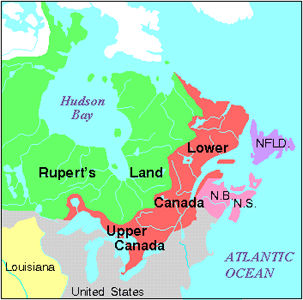
Red River Colony
HBC Surrenders Rupert's Land
The Hudson's Bay Company surrendered Rupert's Land to the Canadian government.
-
December 23, 1869

Red River Colony
Riel's Provisional Government
Louis Riel issued a Declaration of the people of Rupert's Land and the Northwest and became head of the provisional government of Red River.
-
January 19, 1870

Red River Colony
Smith Meets Settlers
Donald Smith met with settlers at Fort Garry during the Red River Rebellion to present Canada's position on the transfer of the territory from the Hudson's Bay Company to Dominion ownership.
-
August 24, 1870
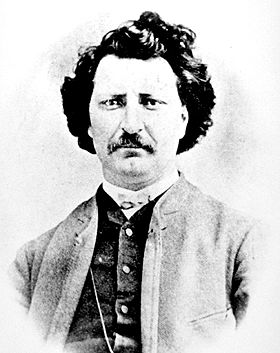
Red River Colony
Riel Flees to US
On the arrival of General Wolseley and his troops from Canada, Louis Riel and other members of his government fled to the US.
-
August 03, 1871
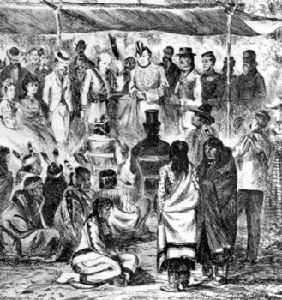
Red River Colony
Treaty 1
The first post-Confederation treaty was signed at Lower Fort Garry, Man. The first of many “Numbered Treaties,” Treaty 1 was signed between the Crown and the Ojibwe and Swampy Cree Nations. The treaty included the provision of livestock, agricultural equipment and the establishment of schools in exchange for ceding large tracts of Indigenous hunting grounds.
-
August 21, 1871
Red River Colony
Treaty 2
Treaty 2 was concluded with Chippewa of Manitoba, who ceded land from the mouth of Winnipeg River to the northern shores of Lake Manitoba across the Assiniboine River to the United States frontier.
-
November 08, 1873

Red River Colony
Winnipeg Incorporated
Winnipeg was incorporated as a city.
-
January 05, 1874
Red River Colony
Winnipeg’s First Civic Election
In Winnipeg’s first civic election, 562 ballots were cast — by 388 registered voters. Only property holders were allowed to vote, but owners of multiple properties took the chance to vote multiple times.
-
April 16, 1874

Red River Colony
Riel Expelled
Louis Riel was expelled from the House of Commons when he attempted to take his seat.
-
May 08, 1882

Red River Colony
Western Provisional Districts
Land acquired from the Hudson’s Bay Company in 1870 was divided into four administrative districts by the federal government: Alberta, Assiniboia, Athabasca and Saskatchewan. The districts, designed "for the convenience of settlers and for postal purposes," were roughly equal in size and natural resource distribution.
-
March 19, 1885

Red River Colony
Riel's Provisional Government
At Batoche, a provisional government of the North-West was proclaimed, with Louis Riel as president and Gabriel Dumont as adjutant-general.
-
March 26, 1885
Red River Colony
Battle of Duck Lake
Leif Crozier, with a force of 98 North-West Mounted Police, was routed by Métis under Gabriel Dumont at Duck Lake, Saskatchewan, marking the outbreak of the North-West Resistance.
-
April 24, 1885

Red River Colony
Battle of Fish Creek
General Middleton engaged Gabriel Dumont's Métis at Fish Creek, NWT; the battle was a stalemate.
-
November 16, 1885

Red River Colony
Louis Riel Hanged
Louis Riel was hanged for treason at the Regina jail. He had been convicted after a trial held in Regina from 28 July to 1 August. Macdonald's refusal to grant leniency made Riel a symbol of English-Canadian oppression.
-
May 19, 1906

Red River Colony
Death of Gabriel Dumont
Métis leader Gabriel Dumont died in Bellevue, SK. Dumont was a prominent hunt chief and warrior, but is best known for his role in the 1885 North-West Resistance as a key Métis military commander and ally of Louis Riel. Dumont remains a popular Métis folk hero, remembered for his selflessness and bravery during the conflict of 1885 and for his unrivaled skill as a Métis hunt chief.




